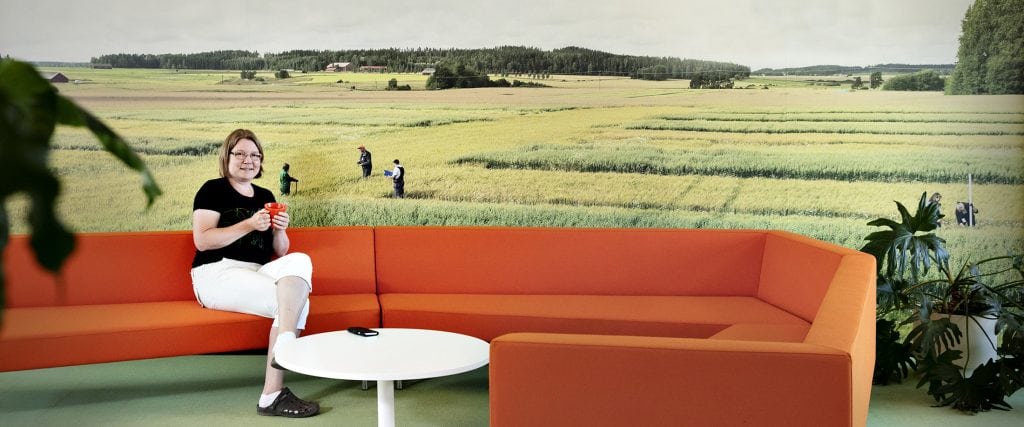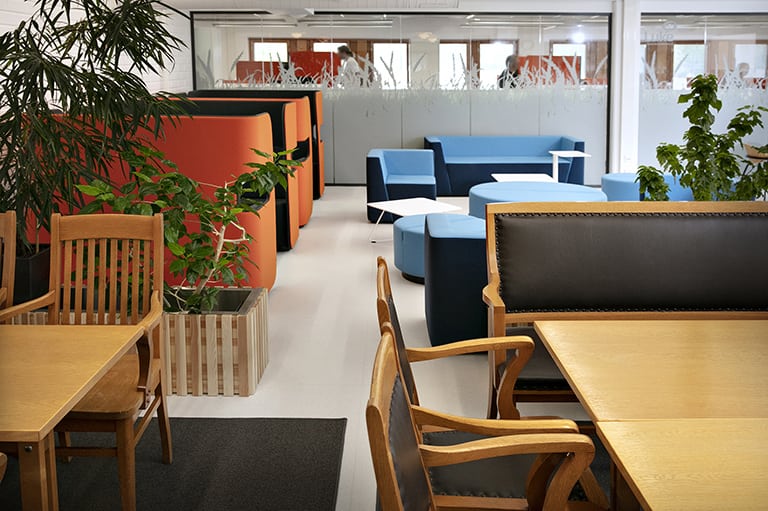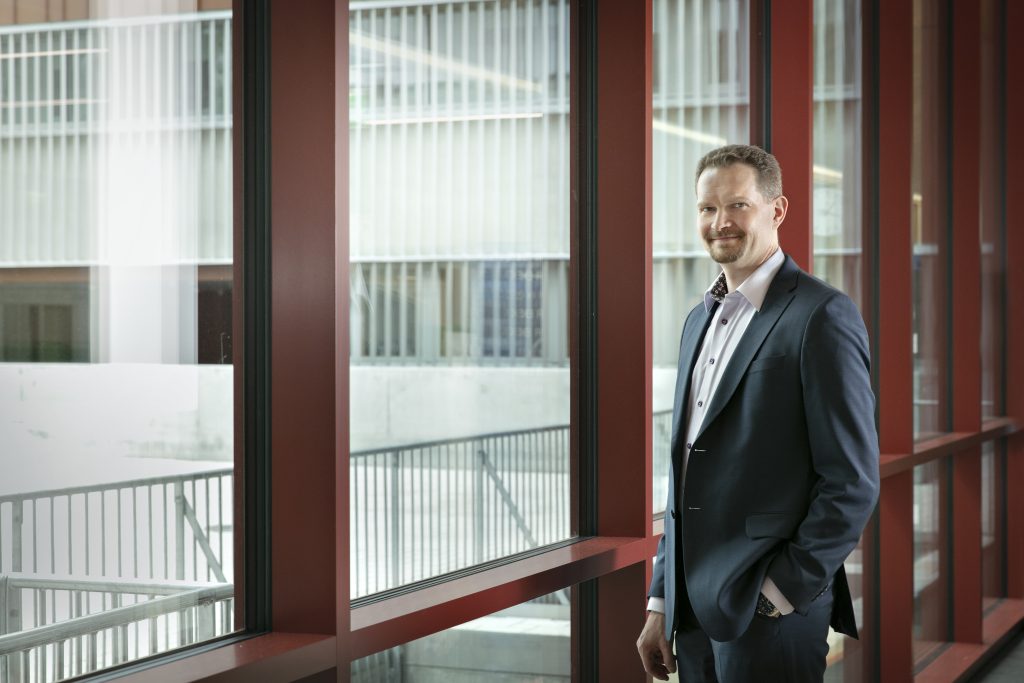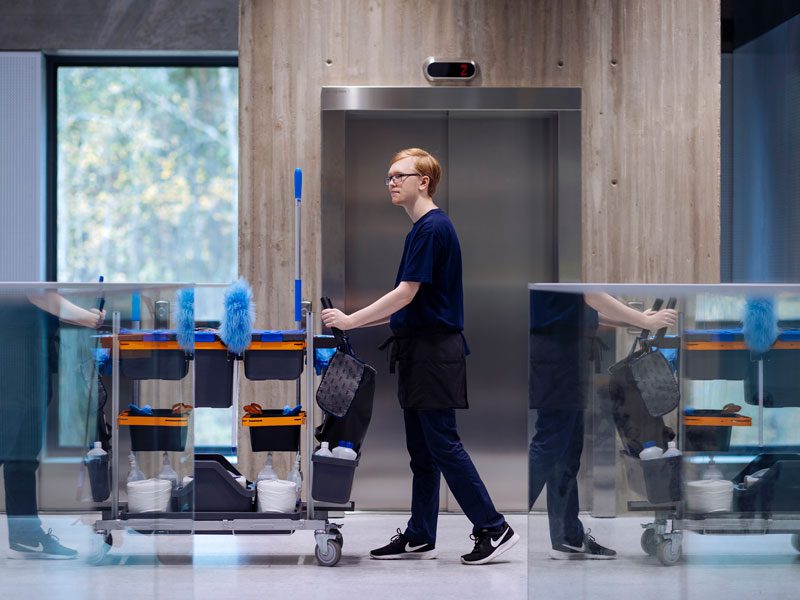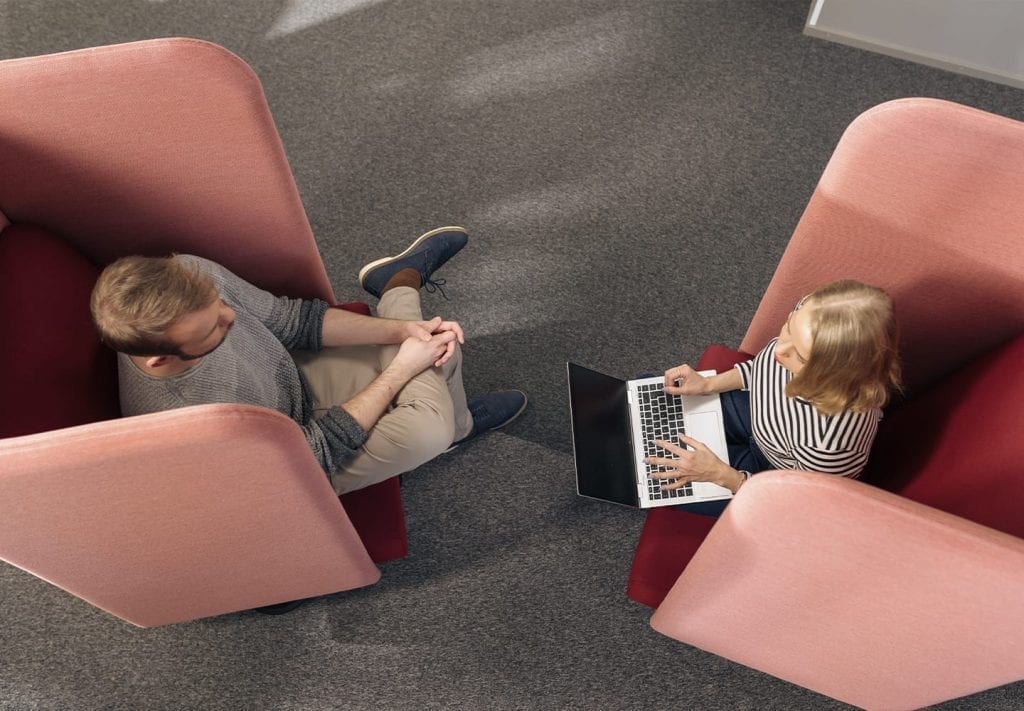A wall covered in a photo of a summertime field, simple, modern furniture, and a fresh colour scheme welcomes Senior Scientist Riikka Keskinen to her workplace, the Jokioinen branch of the Natural Resources Institute Finland, every morning.
Not that long ago, Planta, the main building of the campus, looked a little shabby. The premises displayed signs of the past decades; the furniture and colour schemes were from a time before computers, and the long corridors with brick walls were lined by numerous offices.
“Planta was built at the turn of the 1970s and 80s. The furnishings consisted of old Billnäs furniture and period pieces, and partly of office furniture that had been acquired along the way,” Keskinen explains.
Now the mismatched furniture is nowhere to be seen. Several walls were knocked down when the premises were renovated during the spring and autumn of 2017 into a modern activity-based environment. A total of 300 researchers and experts are based in Jokioinen, and 125 of them work at Planta. They were able to move into their new premises in December 2017. The premises are also used by employees who telework.
“The premises turned out better than most of us had expected. We did get to see some of the architect’s plans before the renovation, but we were still pleasantly surprised by the new premises. Best of all is the airiness, the sense of space and the light. The new working environment has brought one of the largest changes to my way of working.”
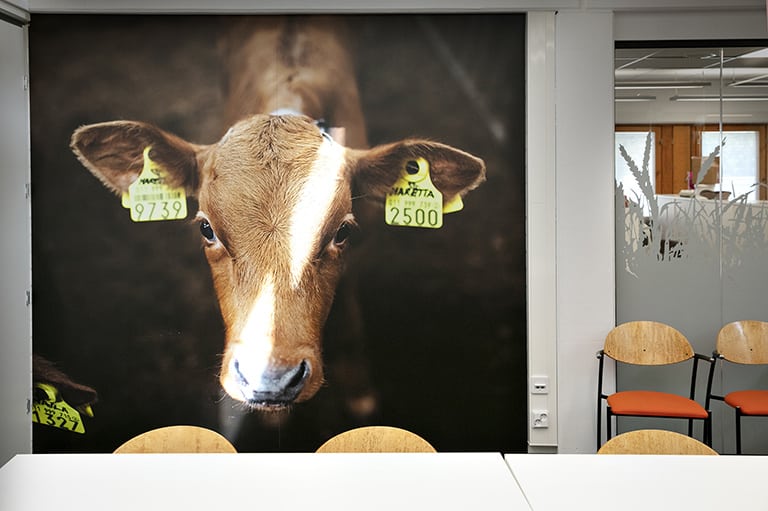
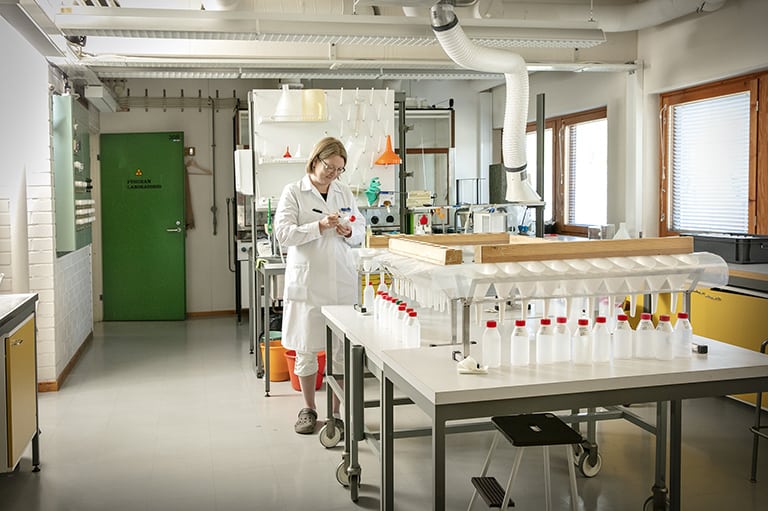
The photo wallpaper in the entrance hall and some other spaces in Planta show snapshots of the work carried out by the staff of the Natural Resources Institute and of the Finnish countryside (top).
Riikka Keskinen is studying minerals in the laboratory. Not much was done to the laboratories during this renovation. A more extensive renovation is planned for the future (bottom).
No more small rooms and post it notes
Riikka Keskinen has worked as a researcher at Luke and its previous incarnation MTT Agrifood Research Finland for nearly ten years. According to her the basics of a researcher’s work have not changed in the past decade, but the environment certainly has.
“Some great leaps have been taken in the areas of digitisation and now in creating activity-based environments – the researchers no longer hide away in their little rooms.”
Keskinen majored in agricultural chemistry and physics at the Faculty of Agriculture and Forestry at the University of Helsinki. Since 2009 she has been working in Jokioinen, first as a researcher and now as a senior scientist. In addition to a university this is one of the few places where extensive research into arable land is carried out.
“Sometimes I’m out in the field taking soil samples, sometimes I’m in the lab. Most of the time, however, I’m on my computer: writing reports and scientific articles, reading and planning my work. At the moment I’m involved in five projects relating to plant nutrition, nutrient management and fertilisers. For example, I’m now working on a biocoal study where we are looking into what effects the coal has on the fields.”
Riikka Keskinen, who was born in Turku and grew up in Helsinki, has felt at home in Jokioinen.
“I’m not a city person, and I always wanted to live in the country. I completed my doctoral thesis here in Jokioinen and earned my PhD in 2013.”
Before Planta was renovated Keskinen used to share an office with Research Engineer Johanna Nikama. The main difference to how things are now is that before, many employees used to squirrel away too many things in their numerous tall cupboards. Large piles of articles and papers also collected on the desks.
“I just never went through all the paperwork even though the material was sometimes really old. I also used to write things down on Post-it Notes, and my desk was practically covered in yellow. The cleaners couldn’t clean it, so it was also pretty dusty.”
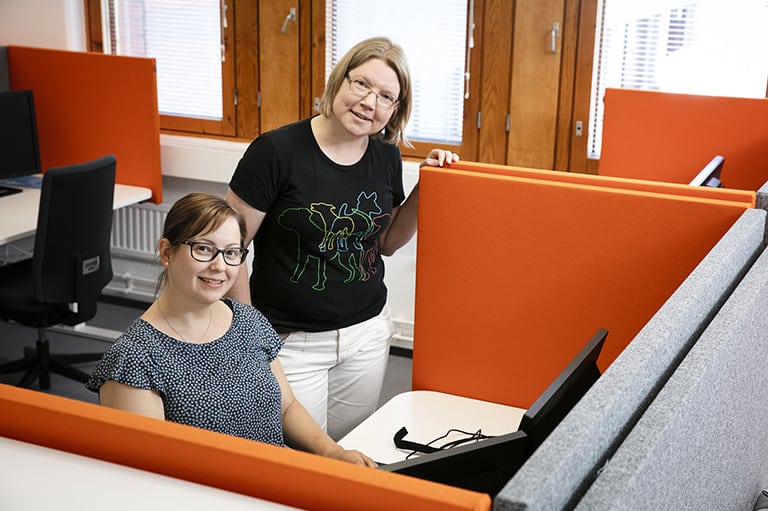
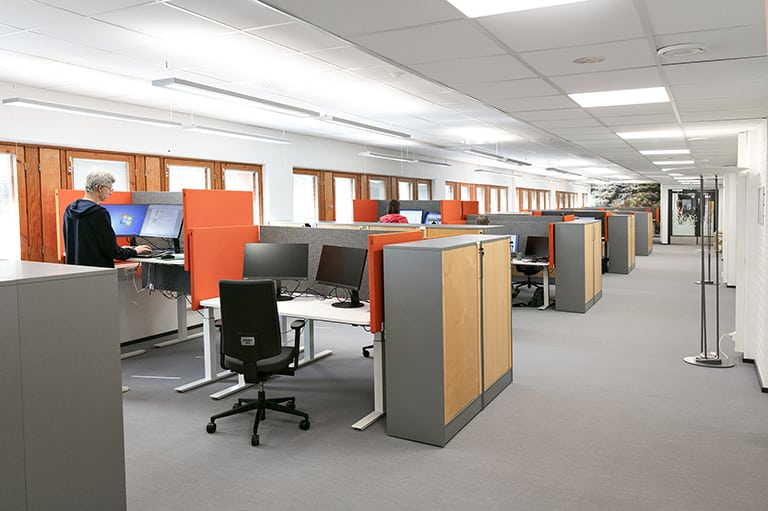
Riikka Keskinen became friends with Research Engineer Johanna Nikama (left) when they shared an office for nearly ten years (top).
In the new activity-based office every employee has their own lockable storage cupboard which contains approximately five metres of shelf space. “That is plenty,” Riikka Keskinen says. Many of the pieces of furniture. including the storage cupboards, have been recycled; the grey cupboards have come to Jokioinen from the old Vallila branch (bottom).
Easier to focus
According to Riikka Keskinen, the best thing about the new activity-based environment is starting every morning with a clear desk. The offices that were knocked down during the renovation have been replaced with three larger open plan working areas, each one containing electric height-adjustable desks and chairs for 24 people. There are also several smaller areas containing work stations for approximately ten people.
No one has an allocated desk, so employees can work at any free work station.
“This way of working suits me well. My mind feels lighter when I’m not surrounded by piles of paper. First I decide what I need to do each day, and then I choose a suitable spot based on what I’m doing and plug in my laptop. Most of the time I enjoy working in the shared working area.”
In addition to the open plan working areas, Planta also has rooms for quiet work, private rooms, project rooms, a meeting room, and right in the middle there is a break room and kitchen with glass walls.
According to Keskinen the new activity-based environment supports quiet work and concentration better than the old type of offices – even though many initially worried that would not be the case.
“The old rooms were badly sound proofed, so there was constant background noise. The hardest thing was that there were no other spaces available, so everything had to be done in the office. If I got a call or had to join a Lync meeting I had nowhere to go. If I was having a private conversation I had to dash out of the shared office to talk.”
“Now I can go to a private room to have my Lync meetings without disturbing anyone else. If I have to spread out my papers for a project for several days I can book one of the project rooms.”
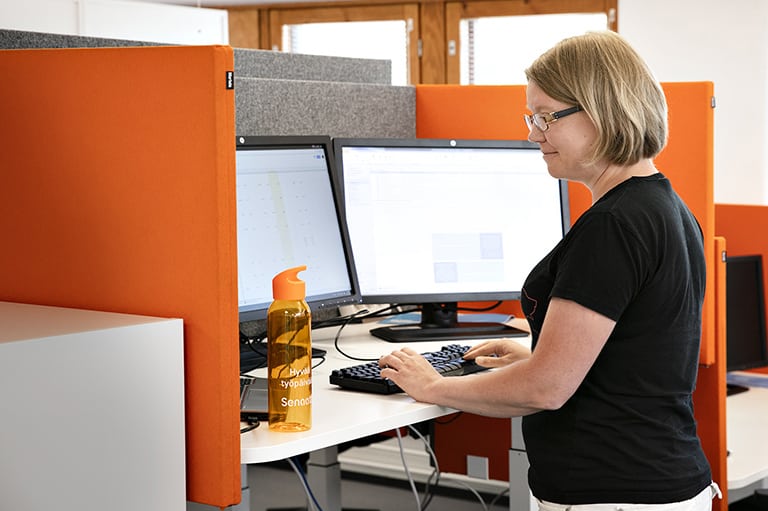
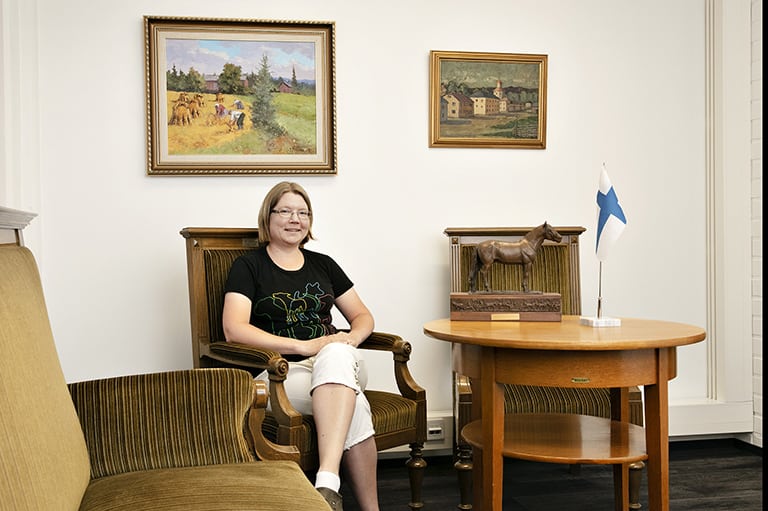
“The electric desks have made it easier to work ergonomically. The two fixed screens at every desk are also a new thing,” Riitta Keskinen explains (top).
In line with Luke’s new office concept a piece of local history has been retained at every branch. At Planta you can step back in time in a project room furnished with President Urho Kekkonen’s chair and other antique furniture (bottom).
A new, refreshing attitude to work
Keskinen feels that the activity-based environment has forced her to examine her own way of working.
“Not everyone was keen to get rid of the offices, but I’m the sort of person who needs change from time to time – something new to drive me. While the renovation was being planned, I was one of the positive voices suggesting that something good might come out of this.”
After the move in December, the atmosphere in Jokioinen has quickly become more positive.
“Of course there were some initial issues. It will take time for us to learn how to use our lovely new spaces and make the most of them. But this has definitely been a change for the better. I think that is how people feel in general.”
Keskinen says that working in a shared space has led to a new kind of attitude to work.
“The work is now refreshingly dynamic. Having people around me and hearing the tapping of keys from every direction makes me really enjoy my work. If I’m closed off in a quiet space for a couple of days in a row I start to miss being surrounded by people.”
Keskinen says the workplace is now more sociable as a whole.
“I am part of a group working on soil ecosystems. Previously there were several break rooms in the building. Now that we all share one break room we end up speaking to people who work in other fields of study and in administration.”

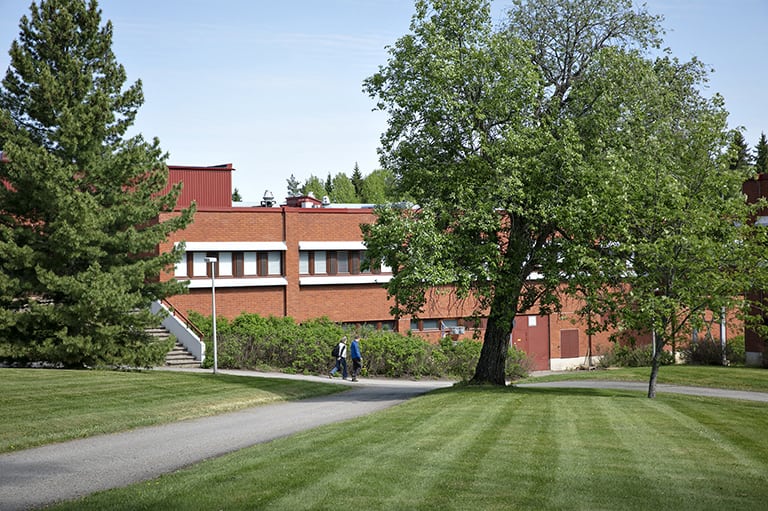
The peaceful private rooms all have different themes and identities, so people can choose the one that best suits their mood at the time. One of Riikka Keskinen’s favourite rooms is one with a maritime theme, where she enjoys sitting down on the sofa briefly with her laptop (top).
The red-brick Planta represents architecture from the turn of the 1970s and 80s. The two-storey building, located in the idyllic green campus in Jokioinen, now contains a modern activity-based environment (bottom).
